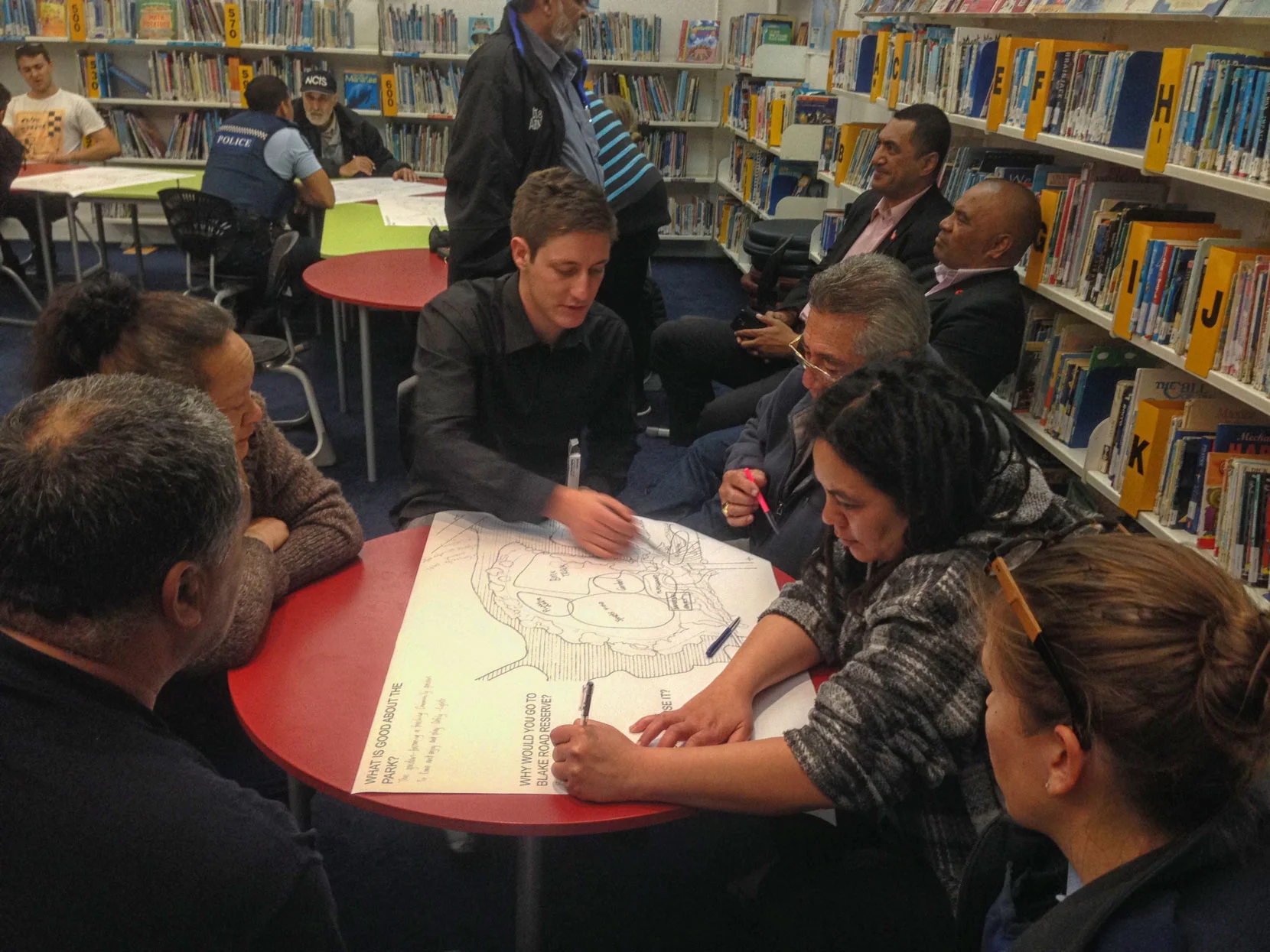PORTS OF AUCKLAND RECLAMATION PROJECT
Issues and Impacts: A Landscape Perspective by Al Newsome
A huge amount has recently been said, written and at times shouted about the long mooted reclamation and expansion project proposed by Ports of Auckland (POA). Actually much has been said, written and shouted about it for many, many years but the sheer multitude and urgency of voices joining the protest now speaks volumes of what we stand to lose should this latest proposal be allowed to go ahead.
It’s hard to succinctly define why this is such an important issue to Aucklanders, and to New Zealanders for that matter, and yet never has it been more important to try.
This is by no means a uniquely Auckland problem, any sense of dismissal from afar merely breeds the appetite for this to land on your own doorstep; however distant that prospect may appear at present, in reality it may arrive sooner than you think.
On one hand the issues are complex and involve long term economic (as well as climate) forecasting with big money decisions wrapped up in political intrigue. However, given the recent exclusion of the public and pressure groups from the decision making process and the huge implications these decisions will have on all of us in Auckland and New Zealand, this should concern all those with an interest in protecting our shared landscape i.e. you and I.
The issue is also a very simple one, however. It is the wishes of a private company (albeit one wholly ‘owned’ by Auckland Council) to expand their commercial infrastructure at the expense of some of New Zealand’s most iconic landscape. There, said it, easy.
So what exactly are the landscape issues as they affect Aucklanders and New Zealanders? Should we be worried, what will be the impact and what are the issues that we need to be taken on board?
In essence, the proposal to increase the length of Bledisloe Wharf by 100m means that what we currently see of Auckland port will be far, far larger in scale than to what we currently see.
There are objections raised by a multitude of interest groups but in terms of landscape issues the key to understanding this proposal lies with the direct threat to the spiritual identity of the Waitamata as a water space, a place of recreation, of natural beauty, of cultural identity. Also of paramount importance here is the urban ecology of greater Auckland. The port does not exist in isolation, it exists inextricably along with the rest of Auckland as one organism which ?
Before you think that this is intangible, emotive language serving a self-interest, think about your own experiences of living near to the Waitamata, to the gulf, to the view that has given Auckland its post-colonial character for 175 years and to the first inhabitants for several centuries before that.
The nature of the harbour has already been profoundly altered during the founding of modern Auckland so this is not a new issue; it is, however, a serious one.
Identity in terms of landscape is the very thing that makes it dear to us individually and collectively. Whether that be Tāmaki iwi/hapu, the community of Devonport or others on its shores, or the workers of South Auckland who are apparently to benefit from increased car imports (NZIER 2015 p22-24) the long term viability of the Waitamata as a place of precious ecology, recreation and identity needs to be balanced against the need to simply increase the movement of goods. The health of Auckland as a whole is at stake. We can reduce carbon, become more efficient and give ourselves pats on the back for recycling but if we neglect the fabric of our landscape we risk negating all of that.
Remember what Auckland was like 20 years ago? Perhaps not but whatever your age or part within Auckland’s social puzzle it’s fair to suggest it was different to a degree that you could not possibly have imagined, and the thought that we would be now be watching cricket matches on our phones and eating ice creams at Silo Park probably would not have figured much in our 1995 plans. Think about that. Would you sell your landscape forever on the off chance that we still needed more second hand Nissans in 2035?
It’s worth noting here that the assumption that in 2035 we will still need or use cars in the same way as we do currently may well be fundamentally incorrect.
Auckland’s Unitary Plan, of which this proposal is part, is being formulated to help deal with the huge population expansion which is already hitting us. Nobody is seriously arguing that this plan should be centred around use of the car as it is currently. Unfortunately for all of us we will still be using the harbour and that will have been irretrievably ruined for a car park that we no longer need. Even though the entire ports project is supposed to be 20 years in the making that is just enough time for the original point of it to become obsolete.
It is sometimes hard to disentangle economics from the wider environmental picture but is worth touching upon, the NZIER 2015 report offers a helpful economic overview, as do other publications, yet by pointing out specific drivers it gives as many reasons why not to support this reclamation project as it does to argue for its benefits. Economics is an aside, there are other port options and there always have been, cars and cruise lines literally come and go. This is now an issue of something at once less and yet more than economics: the landscape which we all share.
This is simply an issue of one business wishing to expand; unfortunately the price for this company’s expansion is the destruction of the very part of our city that is most precious to us and to those who travel thousands of miles to visit us. That is not reason enough to destroy something so intrinsically human and valuable. It’s a very old saying but profit before people is poor business, profit before landscape is simply poorer and more short-sighted business.
To suggest that the future prosperity of New Zealand relies on 100 metres of wharf is, if true, terrifying.
The primary landscape issue we face with this proposal is about the sense of being in the glorious Waitamata. It is the colour of the sea and sky viewed from the land with the islands in the background: of Devonport, yachting and ice cream. The view shafts across the harbour are an intrinsic part of our shared experience. This is something very hard to put an economic value on but when we think about it maybe the City of Crates has a better ring to it for those potential lucrative overseas conventioneers than the City of Sails? Worth a thought perhaps.
The juicy bait of the wharves being opened up for public use is no longer dangling quite as appealingly as it once may have done. We snap at it at our peril for behind it lies the bully shark of jutting concrete waiting to bite. What view from our lovely Queens Wharf in 10 years’ time, 5 year old Hondas quietly baking in the sunshine that previously fell on the Waitamata?Bastion Point remains proud and defiant, a part of an Auckland that stood up for exactly this type of steamrollering. The view from there is lessened by the port but not ruined by it. If anything the port is visible as a reminder of what could have been if all those hours hadn’t been spent protecting something that meant more than the price of a house or a car lot. That makes us Aucklanders and New Zealanders. Forget rich and poor, haves and have not’s, we all have our harbour and it’s free; let it remain so.
This is like the developer pulling out all the period features out of a house in the name of modernity. Nowadays we laugh ruefully and wish it weren’t so. A harbour is little different to a house in that respect except crucially that it belongs to all of us and can never be replaced.
Auckland’s best shot at being ‘the world’s most liveable city’ lies with it being a truly New Zealand city and not by competing with Melbourne or Singapore’s ports: it can’t and it won’t. We can, however, take from each of those other port cities the best of their ideas and use them ourselves while recognising and leaving behind the mistakes before we repeat them.
As Han Meyer commented in the Herald back in 2010 ‘Large scale mono-functional developments are killing every natural and urban environment’. He goes on to make a possibly very logical and yet seemingly impossible suggestion; that the answer lies not in confrontation but in collaboration, to work toward a port that complements our harbour rather than attacks it. Difficult but by doing so we could become the blueprint rather than the basket case.
If we lose that view we might as well shut up shop. If we lose it for a car park the rest of the world will laugh. We will become a case study for future designers and planners on how not to manage natural heritage. We have a responsibility to prevent that from happening.






